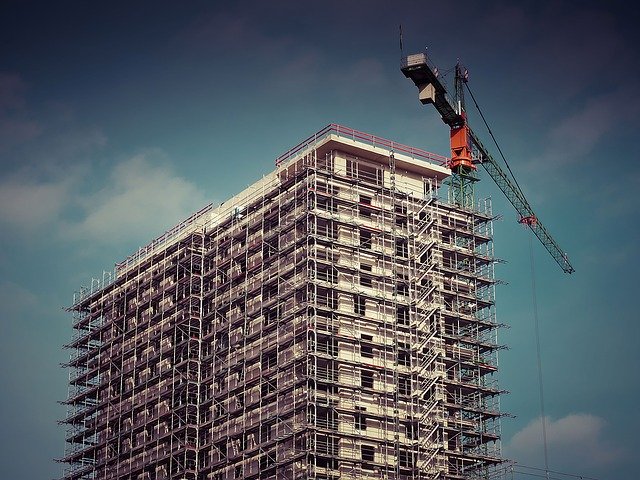Even though I’ve built my career on rehabbing and repositioning large, multi-family apartment complexes, I’ve always remained fond of single-family homes. After all, there is plenty of opportunity for renovating and reselling single-family homes–to the point that there are many articles, TV shows, websites, and magazines that have covered the topic.
And renovating (and then flipping) single-family homes is popular for a good reason: for most, it’s a great way to make a bit of cash, and along the way, learn about the ins and outs of the real estate business. Many valuable lessons that you glean from your work with single-family homes can be applied to other real estate projects, from large commercial properties to vintage apartment buildings.
In fact, reselling houses is comparatively simple–and best of all, you don’t have to leave your local area to do so. That way, you can rely on the existing networks of friends, family, and acquaintances–as well as your familiarity and knowledge that comes with being on your home turf.
Tips on Buying
In the rehabbing and repositioning niche of real estate, the key is to buy right. Often, there are plenty of homes that look shabby and rundown–but despite all that, are very solid, with a strong foundation and plenty of potential for upgrades. This is the easiest way to add value to your investment and turn a quick profit in the process.
But because flipping houses is a smaller transaction (especially compared to those giant commercial real estate developers who demolish, build, and sell multi-million dollar properties), every dollar counts. For the sake of minimizing your costs (and thus maximizing your profit), consider becoming a licensed, real estate professional. That way, you can make the money that goes along with being a real estate agent, such as co-op commissions; you’ll also have a chance to both list and find opportunities on the multiple-listing service (MLS), large, local databases that serve as forums and classifieds sections for real estate agents, brokers, contractors, and other businesses.
Finding Properties on the Cheap
One great source for finding single-family homes to rehabilitate and renovate are foreclosed homes. I’ve found that properties in foreclosure generally have a few issues, such as physical neglect (and thus, an opportunity to improve and resell the property), as well as a homeowner who is often strapped for cash.
Additionally, foreclosed homes also provide a rare, win-win situation: by contacting the homeowner and dealing directly with them, you can buy the home at a discount, and provide them some crucial cash. In the process, you’ll also avoid some of the other fees that go to various middlemen (such as brokers), and further, help pick someone up off their feet.
Ideally, it’s best to contact the distressed homeowner at the beginning of the foreclosure process, which can often take two-three months, at minimum.
Cosmetic rehab
Rehabbing and flipping a house will vary by situation. Yet there are a number of important guidelines that you should follow–loose rules that, for the most part, apply to the vast majority of your purchases.
For instance, cosmetic renovations are a great, easy way to boost the resale price of your property. In particular, upgrading kitchens and bathrooms are a simple way to add value to your investment. In older homes, kitchens and bathrooms are often dated; vinyl floors, linoleum, and broken, ugly plumbing are far too common. Focus on these areas first, as they often yield a great return on any investment you make in them, from new appliances to flooring.
In the past, I encountered an old, single-family house with a 30 year-old kitchen, replete with blue stainless steel cabinets, no dishwasher or oven, and stained and faded countertops. The bathrooms were used as storage by the previous owners, with not a single part of the floor visible. Needless to say, I sprang for the property, which went for $255,000–$15,000 under the asking price. After spending some $42,500 on construction and rehab costs, from landscaping to cleaning and upgrades, we were able to make a net profit of $47,500.
Gutting the home entirely
On the other hand, gutting and rehabbing a single-family home entirely costs both money and time. Unfortunately, time and money are correlated–and not in the way you think: the longer a construction project, the greater the unexpected costs, such as interest and other holding expenses.
Therefore, gutting properties for a thorough, roof-to-foundation rehab is a risky, expensive proposition. Among other considerations, you either need an outside contractor, or to act as your own contractor; either approach takes a lot of experience. For that reason alone, I would recommend that beginners stay away from complete gut rehabs, at least until they build some traction and get some deals under their belt.
One case really hammers home this reality. In the past, my company purchased a 5,000 square foot, three-level Victorian home in Chicago’s Lincoln Square, then a rising, highly desirable neighborhood. We bought this large home for $444,000, a steal but for its conditions. The previous owners were hoarders, collecting junk throughout the structure, mismatching the floors and walls, no garage, ugly landscaping, and no good heating system.
At the same time, the area around the house was seeing plenty of new construction, with a slew of homes (all of whom went for $1 million or more) rising. It wasn’t hard to see the potential: as a result, we reconfigured the whole home with the help of an architect, and began a six-month long reconstruction project, which cost $250,000. When we were done, we sold the house for $850,000, and won the Good Neighbor Award from the Chicago Association of Realtors to boot, for our role in improving the area.
Ultimately, flipping single family homes is a great way to break into real estate, especially the rehab and reposition niche. Don’t forget, you’re doing a lot of good–both for yourself and the community: in the course of making a profit, you’re helping others, from neighbors who desire (and deserve) a better community to distressed homeowners who need cash to stay liquid and recoup a bad investment.





